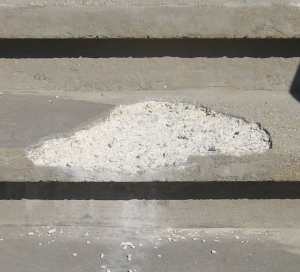Your walkway and driveway are key areas that experience a lot of wear and tear during the winter months. Keeping these areas clear of snow and ice may be the best option for safety but you could be destroying the surface. As strong as concrete and masonry surfaces appear, they can be seriously damaged with the use of rock salt, or the wrong ice melt.
The issue with using rock salt on these surfaces is creating what is called the freeze-thaw cycle. When you use these products to melt the ice and snow, the liquid is absorbed by the concrete and held in the pores. The liquid then refreezes in the pores of the concrete causing it to expand. This expansion causes the surface of the concrete to flake off, or scale. The scaling usually starts in a small area then spreads across the surface. When this damage happens on brick its referred to as spalling.
 The problem is that rock salt, along with other ice melting products, increases the freeze and thaw cycle and at the same time doubles the rate of expansion during the freezing process. So when the freezing process begins again, it expands, placing significant stress on the surface. Over time this will cause the concrete to pit and crack because of the added stress.
The problem is that rock salt, along with other ice melting products, increases the freeze and thaw cycle and at the same time doubles the rate of expansion during the freezing process. So when the freezing process begins again, it expands, placing significant stress on the surface. Over time this will cause the concrete to pit and crack because of the added stress.
Keep in mind concrete and masonry surfaces are especially susceptible to rock salt damage when less than one year old. Always use a concrete safe ice melt for the surface in an effort to protect you stairs or walkway. A concrete safe ice melt might be more expensive but it won’t trump the cost of replacing your structure
.
